A history of our churches in drawings
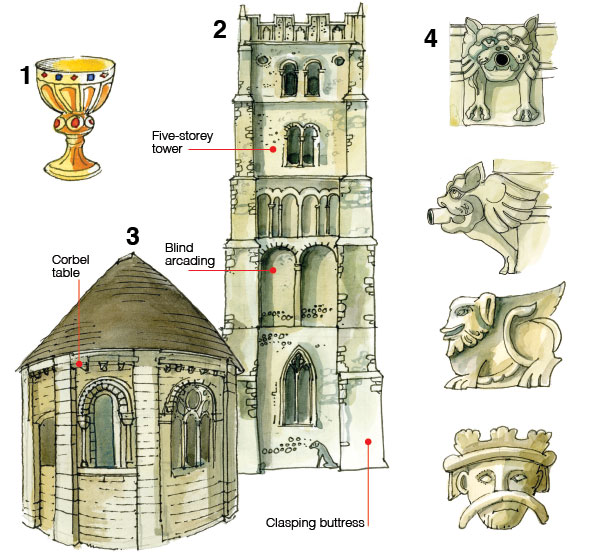 1 Norman Chalice 2 Saxon and Norman 410-1190, St Andrew’s, South Lopham, Norfolk. c.1100 3 Saxon and Norman 410-1190 St Mary's, Birkin, Yorkshire 4 Early English 1190-1250, Details from St Andrew’s, Cotterstock, Northamptonshire
1 Norman Chalice 2 Saxon and Norman 410-1190, St Andrew’s, South Lopham, Norfolk. c.1100 3 Saxon and Norman 410-1190 St Mary's, Birkin, Yorkshire 4 Early English 1190-1250, Details from St Andrew’s, Cotterstock, NorthamptonshireThe bombing of Britain during the Second World War alerted the nation to the importance of recording and protecting its best buildings. As part of the 1947 Town and Country Planning Act, a series of listing grades were established and allocated to certain buildings: they ranged from I down to II* and then II. Today, there are about 10,000 Grade I buildings and just over 20,000 that are Grade II*. A great proportion of these are churches; indeed, 45 per cent of Grade I listed buildings are places of worship.
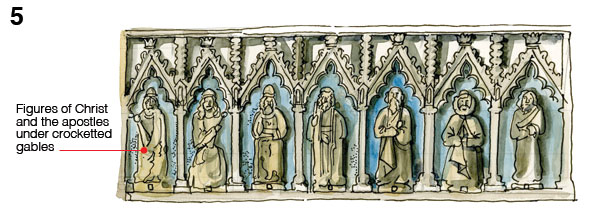 5 Early English 1190 -1250 carved reredos at St Mary’s, Bampton, Oxfordshire
5 Early English 1190 -1250 carved reredos at St Mary’s, Bampton, OxfordshireThe cost of construction, the implied hours of human work, the flights of fancy of its builders and the horizon of their influences make the church and, more still, the abbey, priory or cathedral, the most significant work of art in its surroundings. In fact, the building towers over everything.
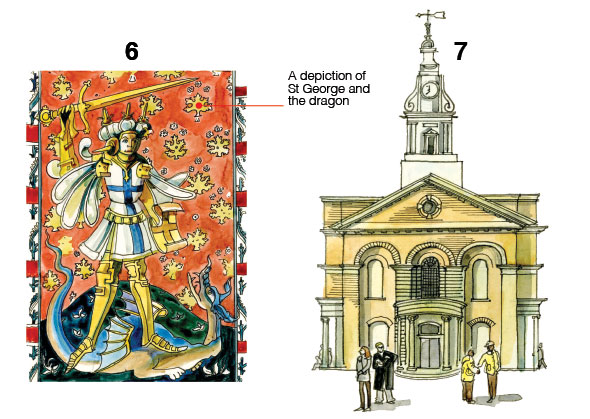 6 Perpendicular 1335-1530 7 Georgian 1714-1820, St John-at-Hackney, London
6 Perpendicular 1335-1530 7 Georgian 1714-1820, St John-at-Hackney, LondonUntil the change of focus to secular mansions in the post-Reformation era (from the 16th-century onwards), the church was the sole canvas for both artists and designers. Even in castles, which competed in terms of expense and social significance, the most intense decoration and creativity was concentrated in the chapel.
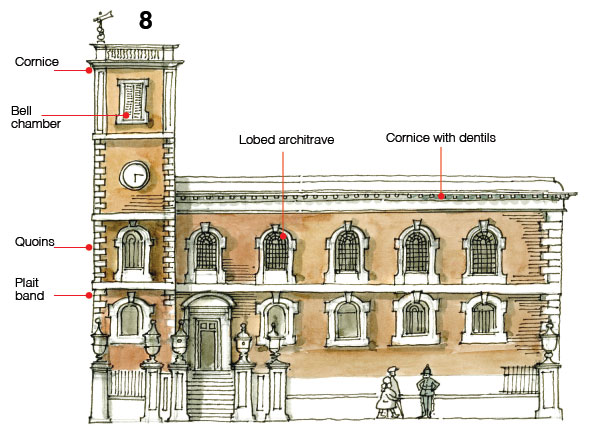 8 Baroque and gothic survival 1530-1714 St Andrew-by-the-Wardrobe, London
8 Baroque and gothic survival 1530-1714 St Andrew-by-the-Wardrobe, LondonChurches remain a dependable reward for visitors today. For nowhere is the story of Britain better reflected than in the monuments of an old church. On slabs, biers and plinths, mounted on the wall, or on brasses and graves, the history of this country manifests itself through the story of generations, and the progression of architectural history is sweetly sung.
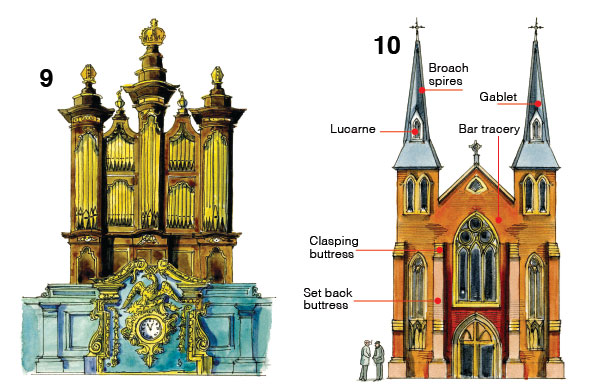 9 Georgian 1714-1820, St leonard’s, Shoreditch, London 10 Regency and early victorian 1790-1851, St Chad’s, Birmingham, A.W.N. Pugin (1841)
9 Georgian 1714-1820, St leonard’s, Shoreditch, London 10 Regency and early victorian 1790-1851, St Chad’s, Birmingham, A.W.N. Pugin (1841)The following illustrations hopefully reflect this, and will also help guide you through some of the features that make our churches so special.
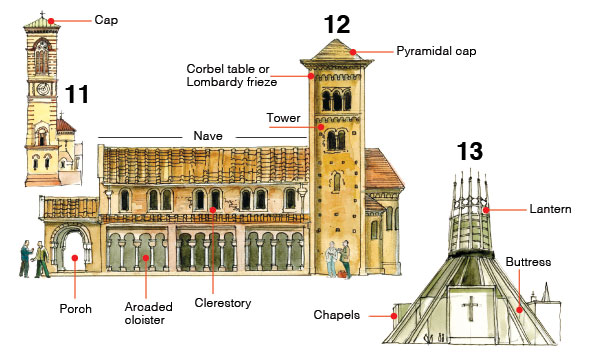 11 High Victorian 1851-1901, St Barnabas, Jericho, Oxford 12 High victorian 1851-1901, St Catherine’s, Hoarwithy, Herefordshire 13 Modern 1901-present RC Cathedral, Liverpool
11 High Victorian 1851-1901, St Barnabas, Jericho, Oxford 12 High victorian 1851-1901, St Catherine’s, Hoarwithy, Herefordshire 13 Modern 1901-present RC Cathedral, LiverpoolRice’s Church Primer, by Matthew Rice, is published by Bloomsbury, priced £14.99.


